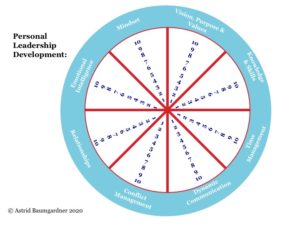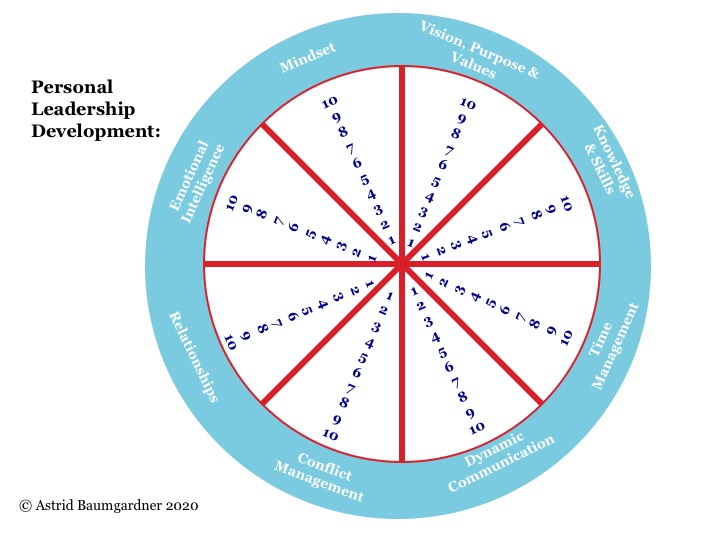 Once again, I had the privilege and pleasure to train the mid-career leaders selected for Opera America’s Leadership Intensive 2020. Our work together centers on authentic personal leadership to prepare the participants to step into larger leadership roles.
Once again, I had the privilege and pleasure to train the mid-career leaders selected for Opera America’s Leadership Intensive 2020. Our work together centers on authentic personal leadership to prepare the participants to step into larger leadership roles.
Authentic Personal Leadership Development Curriculum
My curriculum focused on how to develop the necessary qualities and skills for taking on larger leadership roles in the arts. For background, the leaders read Discover Your Authentic Leadership and the Authenticity Paradox. They also read my newly-published book, Creative Success Now.
They also completed the following preparatory exercises:
- A values assessment which then led them to articulate their values principles;
- The Strengths Based Leadership Assessment; and
- A life purpose statement.
Over the course of five days, we covered the mindset of successful leadership, defining and aligning with one’s authentic leadership goals, time management, emotional intelligence, communication and conflict management. The session culminated in small group coaching sessions where we discussed personal branding, time management and conflict management.
Authentic Personal Leadership Goals
One area that popped for these leaders was how to develop leadership skills. It is fundamental to recognize that there is no one-size-fits-all definition of a leader. Instead, my focus (and the focus of much of the leadership literature) is on discovering one’s authentic personal leadership style.
To that end, we explored how to create authentic personal leadership goals. I define a goal as something you want to achieve in a specific period of time. Without the time frame, your goal is merely a wish.
In order to set goals, we used the Authentic Personal Leadership Development Wheel. This tool has eight areas:
- Mindset
- Vision, Values & Purpose
- Knowledge & Skills
- Time Management
- Dynamic Communication
- Conflict Management
- Relationships, and
- Emotional Intelligence
Using the visual wheel helped to clarify the different aspects of leadership development.
To use the wheel, I asked the leaders to rate how well they were doing in each of the eight areas. They then selected three areas that if improved would advance them the most. The top areas for our cohort were time management, conflict management and vision, purpose and values.
Authentic Personal Leadership Development Learning Goals
Often, authentic personal leadership development goals carry with them some degree of self-doubt:
Am I really the kind of person who can achieve this?
Do I have what it takes?
What if I fail?
That’s why I had the leaders set a special kind of goal: a learning goal. Indeed, Professor Ibarra in her article on the Authenticity Paradox recommends setting learning goals for authentic leadership. Research on learning goals comes from psychologist Heidi Grant. In her article, Nine Things That Successful People Do Differently, she describes two types of goals:
- “Be good” goals, where you set out to prove that you have the ability to perform the task and that you already know what you are doing; versus
- “Get better” goals where you focus on developing your ability and learning new skills.
According to Halvorson’s research, “be good” goals carry with them the need to be “perfect” from the outset. The danger is that the pressure to “be good” often results in poor performance and mistakes. On the other hand, “get better” goals enable you to focus on the experience itself, which takes the pressure off of performing. By giving yourself permission to make mistakes and learn from the experience, you are relieving yourself of anxiety, thereby increasing your motivation to succeed. As a result, the chances of making mistakes are dramatically reduced! And your yardstick is your prior performance, not someone else’s, so you are not competing with others and setting yourself up for more anxiety and failure. Be good or learning goals are another great example of the growth mindset of success.
To set a learning goal, frame it as follows:
“I want to get better at…”
For example, many of our leaders wanted to set goals around conflict management. Setting a performance goal of
“I will become a skilled conflict manager in 6 months”
felt too harsh and unattainable. Instead, they were much more inclined to work towards a learning goal, framed as:
“I want to get better at managing conflict in the next six months.”
SMART Authentic Personal Leadership Development Goals
The next step involved breaking down their goals into manageable action steps. To do so, we used the SMART goal process:
SMART stands for:
Specific: What specifically do I want to accomplish?
Measurable: How will I know when I reach my goal?
Attainable: Is it possible for me to reach this goal?
Realistic: How realistic is this goal in the context of my life?
Time-bound: In what period of time will I accomplish the goal?
A SMART goal breaks down a big dream into a time period in which you can see success. (T)
It leads you to be specific about your big goals (S and M):
It makes sure that you believe in your dream (A) (since you MUST answer yes to the question of “Is it attainable?”); and
It has a built-in reality check by asking how realistic the goal is in light of your time, experience and resources (R).
For example, one of our leaders was somewhat discouraged by her staff’s apparent lack of passion for their work. She zeroed in on the “Vision/Values/Purpose” section of the Authentic Personal Leadership Wheel. Her goal became to improve her ability to inspire her staff with her vision. Her time period was 10 months: the end of 2020.
Using the SMART Goal process, we first explored how to break down the goal into a shorter time period. I therefore asked our leader what she needed to do by the end of six months towards her goal. She decided to hold a meeting with her team in 6 months (August). The meeting would start with each member sharing his or her passions and strengths.
The next time period was 3 months (May) by which time the team members would take a strengths assessment.
We further broke down her idea to the end of the month when she committed to articulate her vision and generate ideas for the meeting. This was the time period within which she could see her success.
Our leader felt energized by the SMART goal exercise and was excited to begin working on her goal as soon as she returned home from Leadership Intensive.
Bottom Line:
Authentic Personal Leadership Development starts with identifying the areas you want to improve. Next, set an inspiring goal—and make it a learning goal if you need a boost to your self-esteem. Finally, break that goal down into SMART goals and start taking SMART actions.

